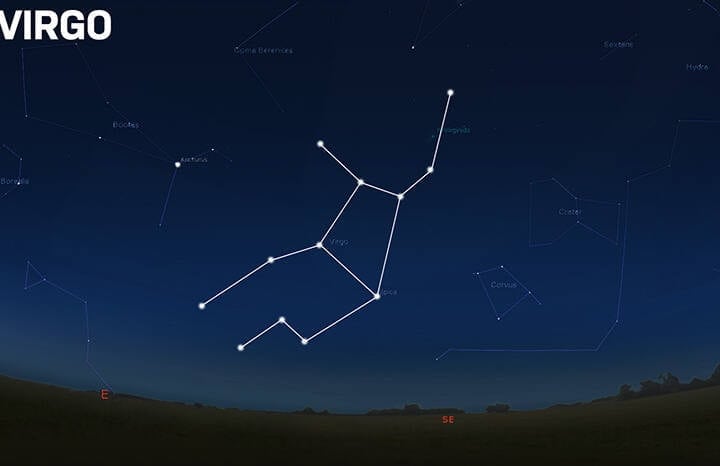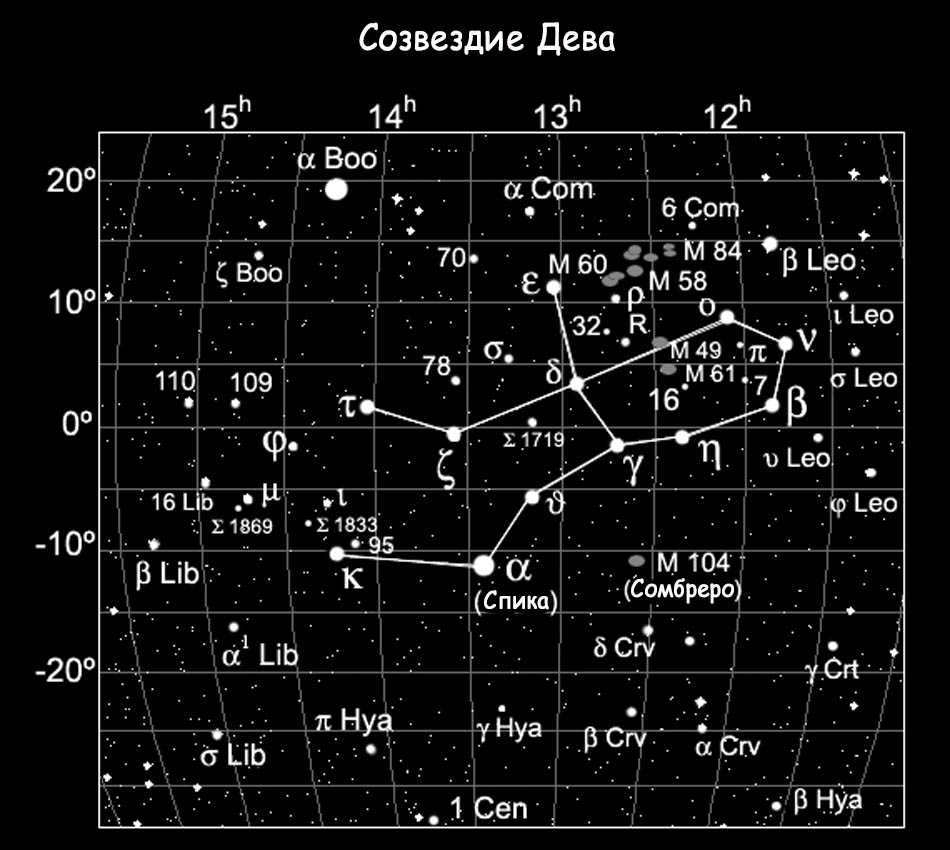

As we all know, a segment of the celestial sphere has been identified as a zodiac group. One of the constellations that falls within this group is Virgo, which can be found on the ecliptic. Spanning 1294 square degrees, it is the second largest constellation in the entire expanse of the sky. Furthermore, it currently houses the point of the autumnal equinox.
Bordering this region are the constellations of Libra, Magus, Veronica, Raven, Hydra, Hare, Leo, and Cups.
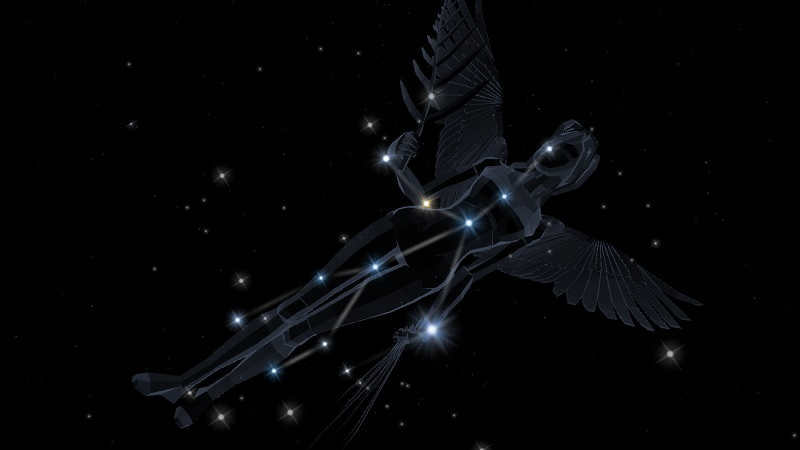
The constellation Virgo
The constellation Virgo has been known since ancient times, although Claudius Ptolemy is officially credited with its creation. In the 2nd century, he added the area to his celestial catalog Almagest. However, references to the constellation Virgo can be found in many ancient cultures. It was often associated with various heroines, particularly with Dike, the goddess of justice. Dike was often depicted with a spike, which represented the star Spica. Additionally, there is a myth about Demeter, the goddess of fertility and agriculture. It is interesting to note that the word “Virgo” translates to “virgin”.

Demeter, the deity associated with the aspects of fertility and agriculture, is represented by the image above.
Virgo Constellation: Celestial Bodies
The most brilliant star in the celestial division is undoubtedly the Alpha — Spica, representing the wheat ear of Virgo. Additionally, it is the 15th most radiant star in the entire expanse of space. It is a close binary system composed of a massive blue-hued luminary and a main-sequence component. Interestingly, they do not overshadow each other but instead experience gravitational distortion. The apparent magnitude is 0.98.
Coming in second place is Gamma — Porrimae, named after the goddess of childbirth or prophecy. It is a binary star with a luminosity of 2.74.
The third position is rightfully held by Epsilon with the mysterious moniker Vindemiatrix, which means grape picker. In reality, it is a yellow giant with a visual magnitude of 2.83.
Next up is Zeta, the blue subgiant on the main sequence with an apparent magnitude of 3.38.
In fifth place is Delta — Minelauva, whose name signifies a barking dog. It is also a giant star, but it boasts a red hue and a luminosity of 3.4.
Lastly, there is Beta — Zawiyawa, which in the plot represents the rib of a dog. It belongs to the category of dwarf luminaries. Its visible magnitude is 3.61.
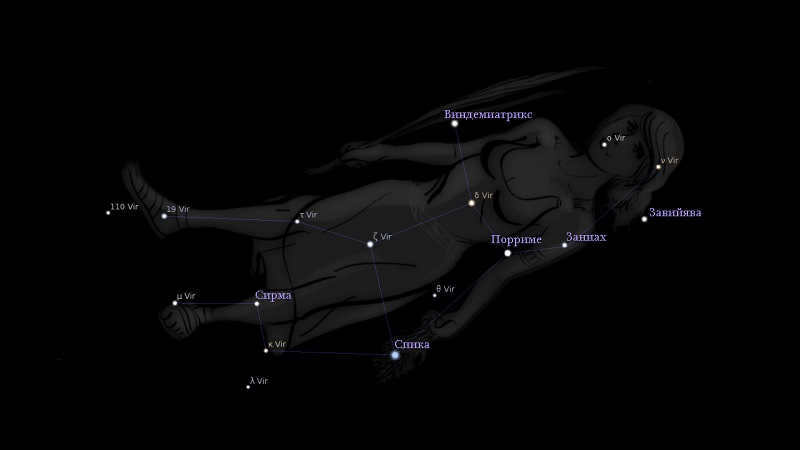
The stars that make up the Virgo constellation
Mu represents the lower extremity or paw of a canine and is classified as a massive blue star. It possesses a luminosity of 3.88.
Meanwhile, This particular star — Zaniah, which denotes an angle, is characterized by a triple system of closely positioned components. Consequently, visually distinguishing them becomes quite challenging. It has an apparent magnitude of 3.89.
Nu – is a red giant star with variable luminosity. Its average apparent magnitude is 4.04.
Iota — Sirma, which translates to a plume of clothing, is a subgiant star displaying a blue-white hue with an apparent magnitude of 4.07.
It is worth noting the celestial bodies 61, 70, and 109 Virgo. These stars are classified as dwarf stars, and their apparent magnitudes are 4.74, 5, and 3.73 respectively.
Hi is a binary system with a luminosity of 4.65. The primary component possesses three satellites and a massive planet.
Of course, we have only mentioned the principal stellar components comprising the Virgo constellation. There are other stars hiding within the vast expanse. To this day, scientists continue their research in this area.
What celestial objects are found within the constellation Virgo?
Undoubtedly, the expansive region of the Virgo constellation is home to numerous captivating astronomical formations.
First and foremost, there exists the remarkable Virgo cluster, which encompasses a minimum of 1,300 systems. Interestingly, this cluster includes certain objects from the constellation known as Veronica’s Hair. Specifically, these objects are referred to as Messier objects labeled M85, M88, M91, M98, M99, and M100.
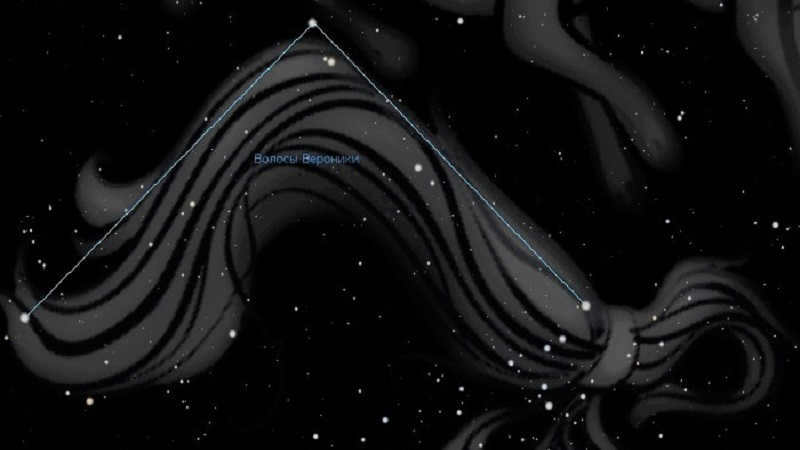
The constellation known as Veronica’s Hair contains several notable celestial bodies. One such object is NGC 4216, a spiral system that stands out for its brightness and size. NGC 4216 is believed to have absorbed smaller gravitationally bound regions in its vicinity. Another remarkable feature in this area is NGC 4261, an elliptical galaxy with a supermassive black hole at its core. Lastly, NGC 4526, a lenticular galaxy, can also be found in this cluster. What makes NGC 4526 interesting is the presence of two exploding supernova stars.
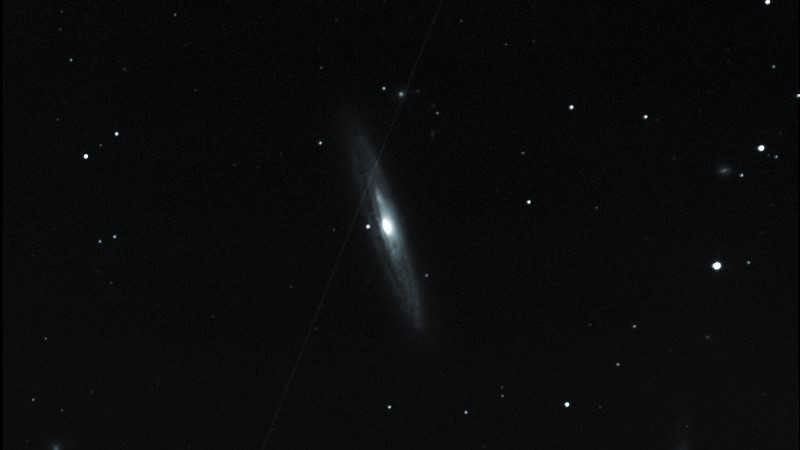 NGC4216
NGC4216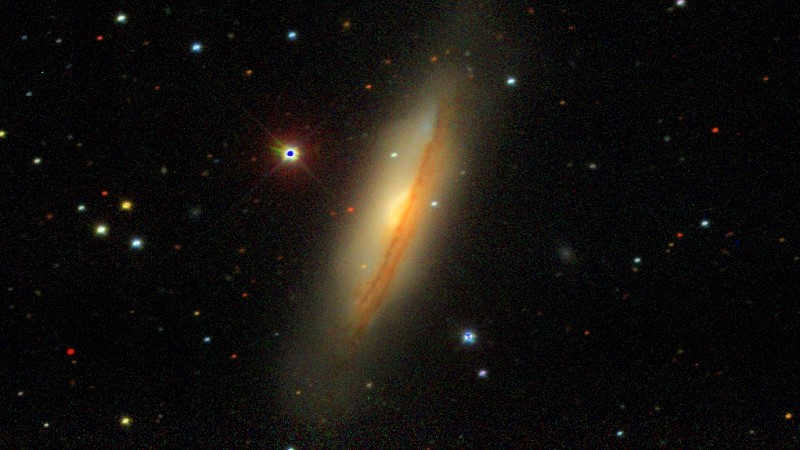 NGC4261
NGC4261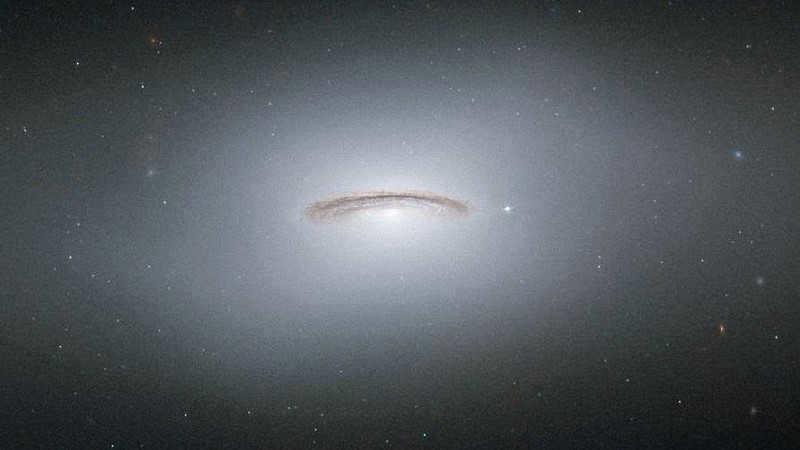 The NGC4526 is a galaxy in the constellation Virgo.
The NGC4526 is a galaxy in the constellation Virgo.
Indeed, Charles Messier made a significant contribution to his catalog by discovering and including numerous objects in the Virgo region.
For instance, he identified spiral galaxies such as M58, M61, M89, and M104 (Sombrero).
Simultaneously, he also found elliptical galaxies, including M49, M59, M60, M84, M86, M87, and M90.
Additionally, all these objects exhibit a high level of brightness and can be easily observed using a regular telescope.
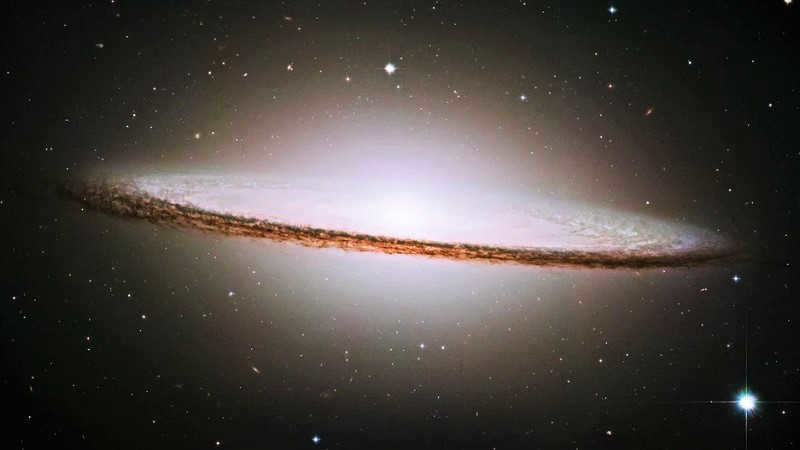
The Sombrero Galaxy
Furthermore, within the Virgo constellation there resides a duo of galaxies engaging in an interstellar interaction. They have been affectionately labeled as The Eyes of Virgo.
Moreover, there exists yet another galactic duo – the Siamese Twins.. Presently, they are undergoing the process of merging together.
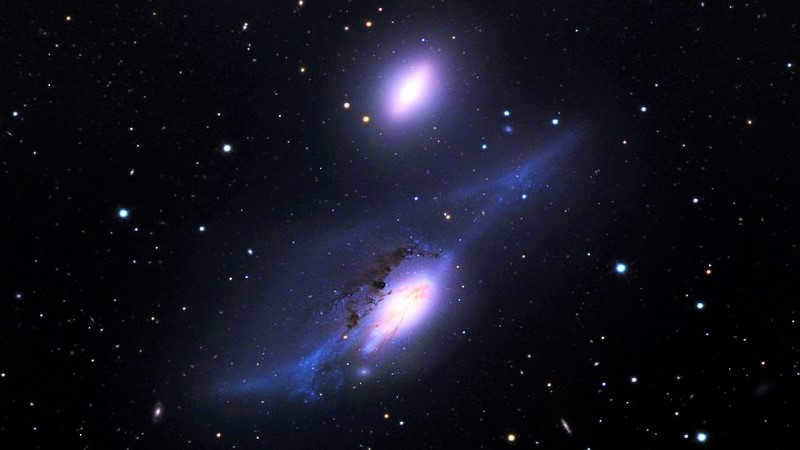
Virgo Eyes is the name of a pair of galaxies in the Virgo constellation.
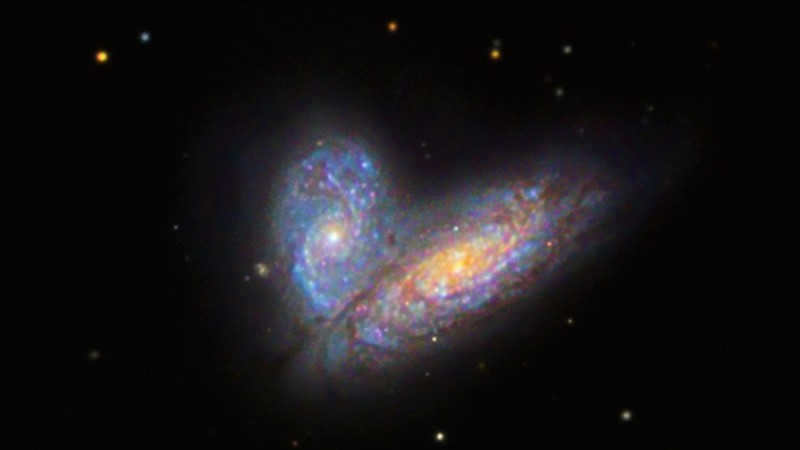
The celestial pair known as the Siamese Twins.
An important discovery has been made in this region – a quasar known as 3C 273. It is classified as a blazar due to its compact nature. This is the first of its kind to be found and is also the most luminous object in the entire cosmos. According to scientists, it is an extragalactic source of X-ray radiation, believed to be the result of a supermassive black hole.
On the other hand, Virgo offers a wealth of information about globular clusters of stars.
Interestingly, a group of stars has been discovered in the constellation Barker. It consists of Beta, Gamma., This one., Delta, and Epsilon constellations.
Additionally, there are a few meteor showers in the area – the Virginids and Mu Virginides.
Without a doubt, the region’s popularity remains constant. This means that it deserves our time and attention. Undoubtedly, it is an incredibly fascinating place.
Observation
Given that the visibility of the region decreases at a latitude of +68 to -75 degrees, it is accessible to residents of Russia from all regions.
Based on the information provided by astronomers, the Sun traverses the Virgo constellation from September 16 to October 30. Consequently, it can only be observed during the remaining period. However, the most favorable conditions for observation are typically observed in the months of March and April.
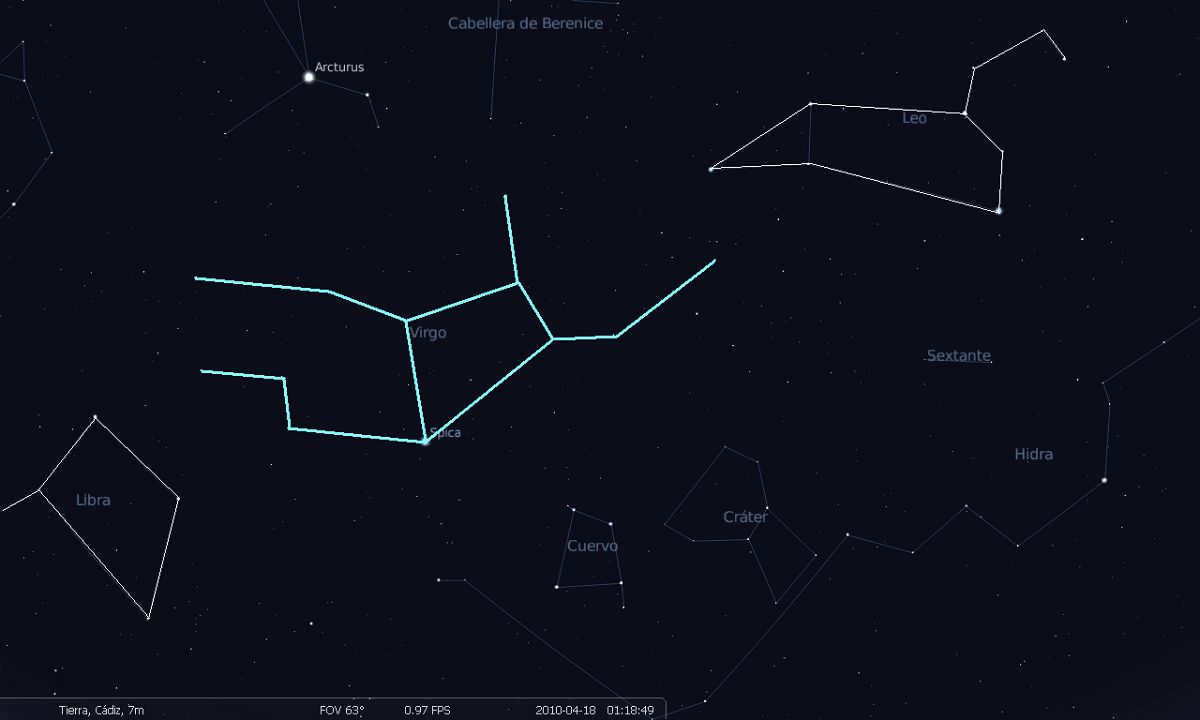
As mentioned in previous texts, the sky is filled with constellations, which are groups of stars that are named after the zodiac signs. One of the most well-known constellations in the zodiac is the Virgo constellation. This particular constellation received its name in the plural form due to the abundance of stars that comprise it and the brightness levels each of them emits.
Therefore, the focus of this article is to provide you with all the essential information regarding the characteristics, origins, and mythology associated with the Virgo constellation.
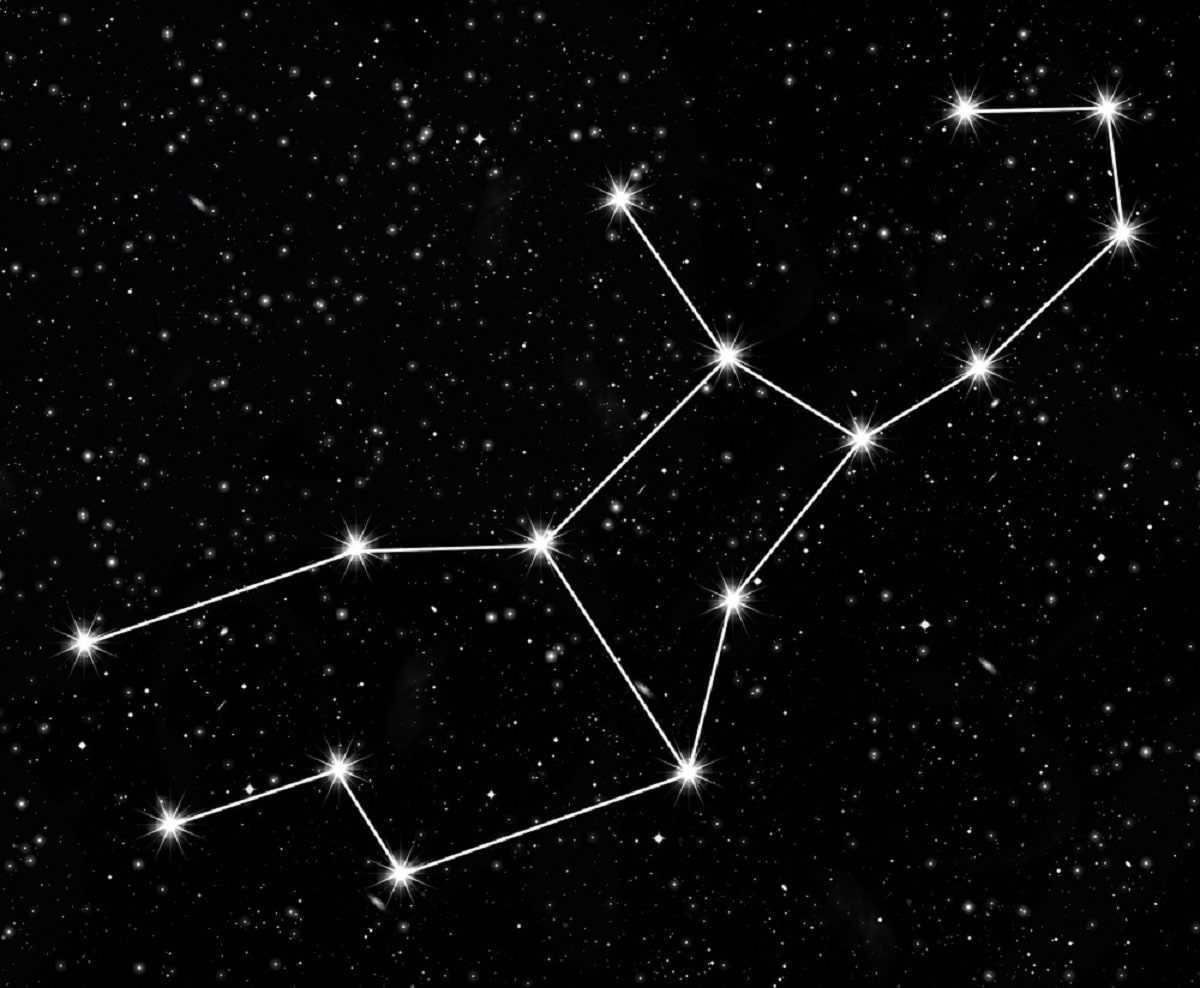
Virgo can be found to the south of this circle, about 2 degrees below it. In the southern hemisphere, Virgo is considered an autumn constellation. It is situated between 30º and 40º north of Centaurus. One of Virgo’s prominent stars, Spica, can be found roughly in the center of the 100º arc that stretches between the first two markers of the zodiac’s ecliptic: Antares (in Scorpio) and Regulus (in Leo).
With an area of nearly 1300º, the constellation Virgo is one of the largest constellations in the sky. It is surpassed in size only by the constellation Hydra, which covers an area of 1303º. Located on the celestial equator, Virgo can be seen from both hemispheres between the months of February and August. As the largest sign of the zodiac, the sun spends over 40 days in Virgo, specifically 45 days, making it the longest solar month. One notable characteristic of Virgo is its proximity to the north pole of our Milky Way galaxy. This positioning provides us with a unique vantage point to observe the Milky Way and its globular star clusters.
On the contrary, there have been no sightings of star fields or star clusters. It’s truly mind-boggling to envision the vast expanse of galaxies with just a telescope and a handful of stars. Virgo is surrounded by the constellations Butes and Coma Belenica, while Leo lies to the east, Crater to the south, and Corvus and Hydra to the west, with Libra and Sepens Capu also in the west.
Observing the constellation Virgo is a breeze in our northern hemisphere and serves as a helpful guide in identifying other constellations. Virgo is home to numerous distant galaxies, some of which can be seen using medium-sized telescopes.. The Sun passes through Virgo from September 16 to October 30.
Located between Leo to the west and Libra to the east, this constellation holds a prominent position in the zodiac. It is an expansive constellation, ranking as the second largest in the sky after Hydra, and boasts a rich history. Virgo serves as the designated zodiac constellation for the 30-degree sector of the Sun, with its ecliptic crossing occurring from August 24 to September 22.
The Legend of the Virgo Constellation
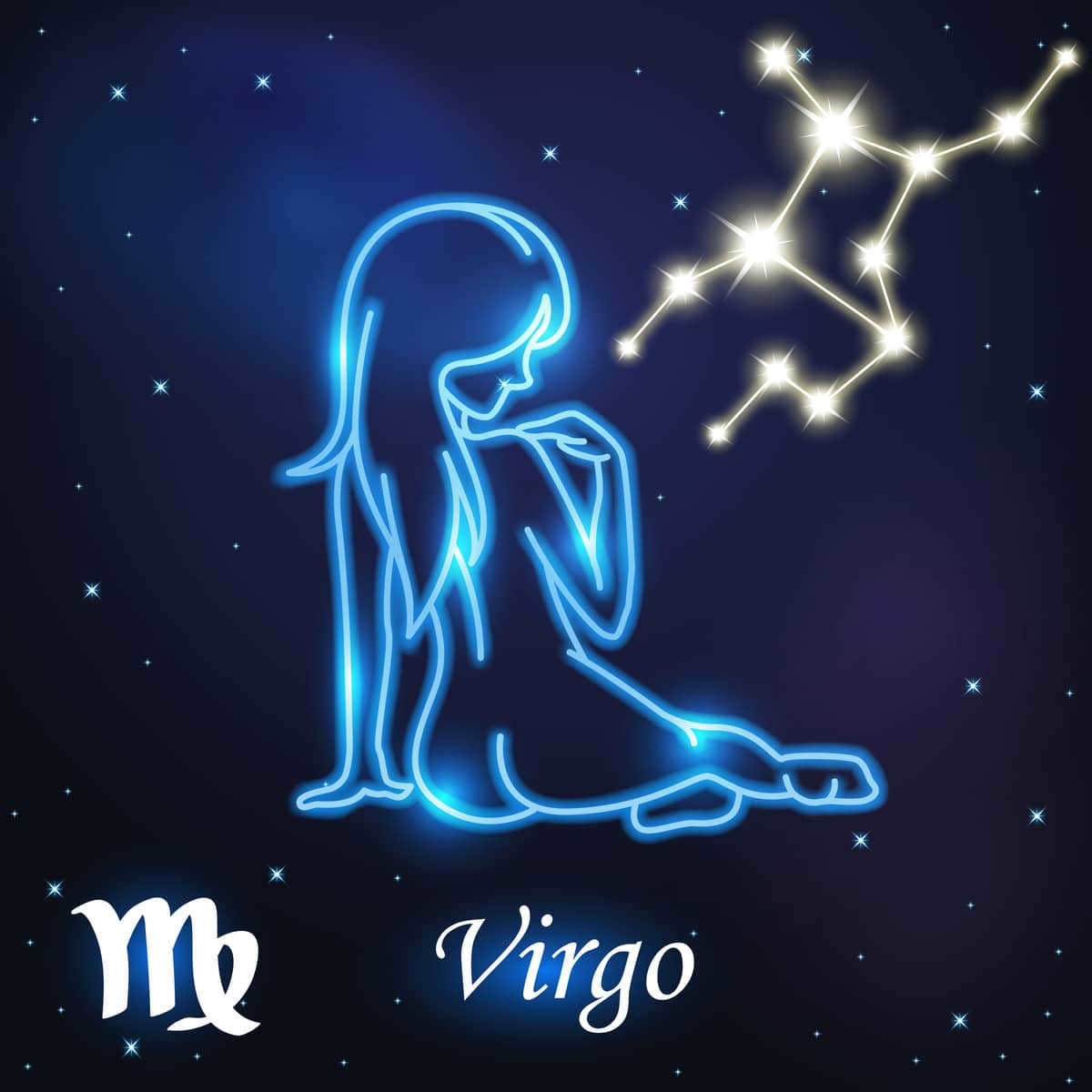
In mythology, the constellation Virgo is associated with the goddess Ishtar, who ventured into the underworld in an attempt to transform her beloved into the harvest god Tammuz. However, once Ishtar descended into hell, she became trapped and unable to return, resulting in a desolate world. As Ishtar remained imprisoned in the underworld, humanity witnessed a bleak and sorrowful existence. In order to rectify this, the mighty gods made the decision to free her. This mythical event bears resemblance to a similar occurrence in Greek mythology.
The story of Persephone revolves around her abduction by Hades and the subsequent consequences that unfolded when Persephone’s mother prevented the harvest, leading to widespread devastation.
This myth is evidently connected to the vegetative cycle of plants: planting seeds in the autumn; sprouting in the spring and producing fruits and gathering in the summer. The primary celestial bodies are: the Spica spike and the Vendiamiatrix constellation signify the moment of gathering. The primary celestial bodies: the Spica spike and the Vendiamiatrix constellation signify the moment of gathering.
The constellation of Virgo is feminine and was formerly derived from the Assyrian-Babylonian civilization, closely linked with fertility and purity, cleanliness.
Virgo’s primary celestial bodies
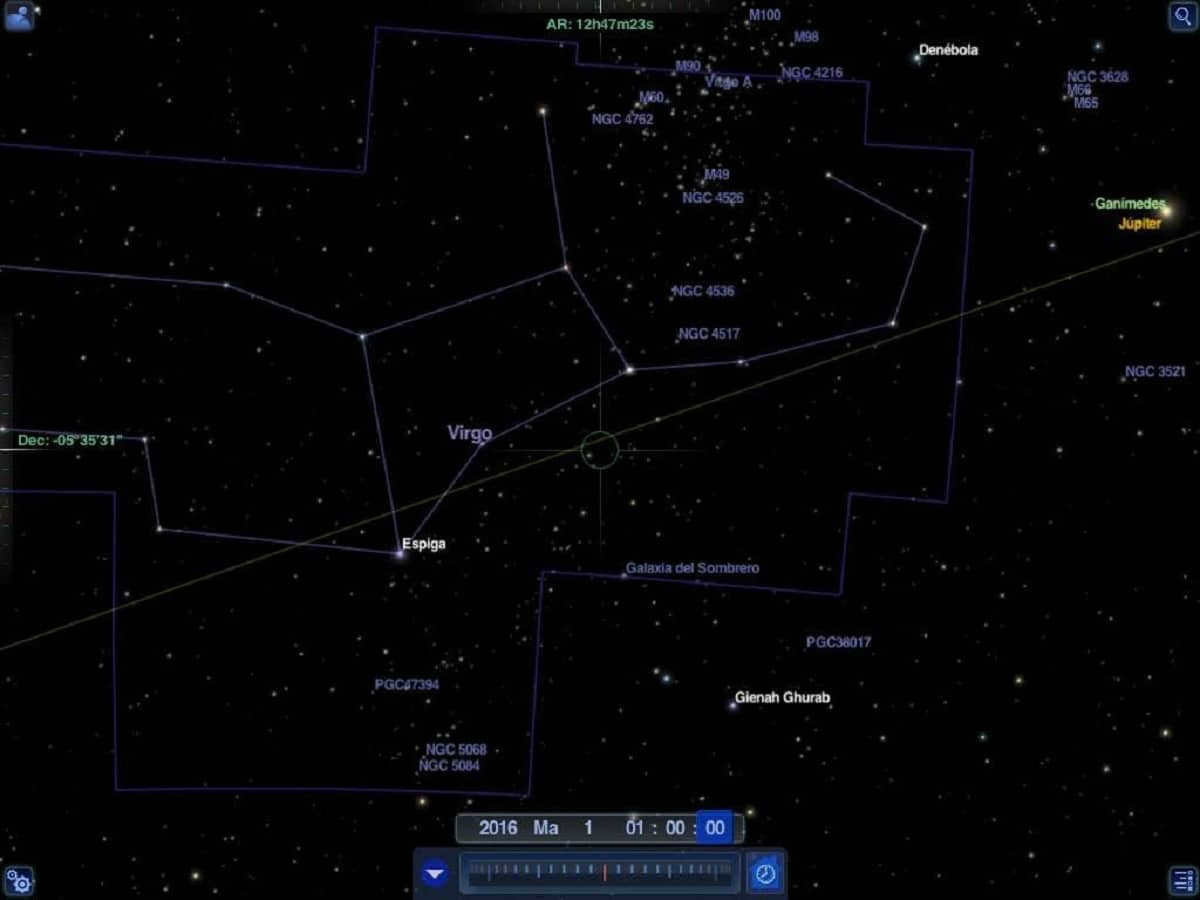
The constellation of Virgo comprises a cluster of highly luminous stars like Spica, Zaviava, Porrima, and Windemiatrix. Each star possesses its unique brightness and color, but collectively they form the captivating beauty of the Virgo constellation. Now, let’s delve into the individual characteristics of the primary stars within the Virgo constellation:
This is the most luminous celestial body, and its form bears a resemblance to that of a typical female traveling towards Ecuador. The elliptical exercise machine can be found in the northern direction with a deviation of 2 degrees to the south. Spica is situated amidst Antares or Scorpio and Regulus or Leo, recognized as the primary dimensional indicators for the lower and upper boundaries, precisely at the midpoint of the 100 degree arc.
Referred to as a “spike,” the Spica star possesses a color dimension of 1 due to its blue to blue-white hue.
Zawiyawa
Zawiyawa is a star that has low visibility. With a magnitude of 3.8, it emits a faint yellowish glow. Astronomers classify Zawiyawa as an angular star due to its unique brightness.
Porrima
Porrima, also known as the Roman goddess of prophecy, is the name given to a star. With a magnitude of 2.8, it shines in a yellow-white hue. This celestial body is widely recognized for its luminosity.
Windemiatrix
This star is named after the term “combine”, which refers to the process of blending. It has a stellar magnitude of 2.8 and a completely yellow hue.
Speaking of the planet representing the Virgo constellation, we have Mercury. Being the sixth sign of the zodiac, Virgo individuals possess a keen attention to detail and find enthusiasm in situations that others may dismiss as unimportant. That is why Mercury greatly contributes to the emotional organization of people born under this sign.
I trust that this information will allow you to gain further insight into the Virgo constellation, its characteristics, and its mythology.
The content of this article adheres to our editorial guidelines. To report any inaccuracies, please click here.
Summary of the Full Article: Network meteorology ” astronomy ” Virgo constellation
Virgo, also known as the Virgin, is a constellation in the zodiac. It is the second largest constellation in the sky, located between Leo and Libra. The constellation gets its name from the Latin word for virgin, and its symbol is ♍. It is the largest constellation in the zodiac and can be easily identified by its brightest star, Spica. The celestial equator and Pisces are also located within the Virgo constellation.
- 1 Location
- 2 Features
- 2.1 Stars
- 2.2 Exoplanets
- 2.3 Deep space objects
Place
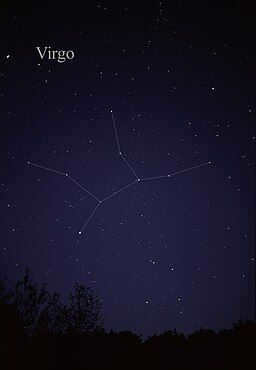
The constellation known as Virgo is quite prominent in the spring sky in the northern hemisphere. It can be seen throughout the entire night during the months of March and April. What sets Virgo apart from other constellations is its size, as it is the largest zodiacal constellation. It takes the Sun a total of 44 days to pass through Virgo, making it the longest transit of any constellation. This particular event will occur between September 16 and October 30 from the years 1990 to 2062.
One of the reasons why Virgo is so easy to spot is due to its bright star, Spica. By following a slight curve from the Big Dipper/Plough to Arcturus in Botes and then continuing along that same curve, one can easily locate Spica. It’s as simple as following the arc to Arcturus and then moving on to Spica.
Due to the effects of precession, the initial point of Libra (also referred to as the point of the autumn equinox) lies within the boundaries of Virgo, in close proximity to β Virgo. It is one of two points in the celestial sphere where the celestial equator intersects with the ecliptic (the other being the initial point of Aries, currently situated in the constellation Pisces). From the 18th to the 4th century B.C., the Sun resided in Libra during the autumn equinox, after which it shifted into Virgo. Around the year 2440, this point will transition into the adjacent constellation of Leo.
Unique Features
Shining Stars
In addition to Spica, Virgo showcases other brilliant stars like β Virginis (Zaviyava), γ Virginis (Porrima), δ Virginis (Auva), and ε Virginis (Vindemiatrix). Some dimmer stars have also been bestowed with names, such as ζ Virginis (Heze), η Virginis (Zaniah), ι Virginis (Syrma), κ Virginis (Kang), λ Virginis (Hambalia), and φ Virginis (Elgathar).
Notably, the star 70 Virginis possesses one of the earliest known planetary systems beyond our solar system, featuring a confirmed planet with a mass 7.5 times that of Jupiter.
Moreover, the star Hi Virgo harbors one of the most massive planets ever detected, boasting a mass 11.1 times that of Jupiter.
The star 61 Virginis, resembling our own sun, boasts a trio of planets: one classified as a super-Earth and the other two categorized as Neptune-like planets.
SS Virginis is a variable star with a prominent crimson hue. Its brightness varies from a minimum of 9.6 to a maximum of 6.0 over a span of approximately one year.
Exoplanets
Virgo hosts a total of 35 confirmed exoplanets that revolve around 29 different stars. Some notable examples include PSR B1257 + 12, which has three planets, 70 Virginis with one planet, Chi Virginis with one planet, 61 Virginis with three planets, New York Virginia with two planets, and 59 Virginia with one planet.
Deep Space Objects
Due to the presence of a group of galaxies (later named the Virgo cluster) within its boundaries from 5° to 12° west of ε Vir (Windemiatrix), this constellation contains a particularly abundant number of galaxies.
Some notable examples include Messier 49 (an elliptical galaxy), Messier 58 (a spiral galaxy), Messier 59 (an elliptical galaxy), Messier 60 (an elliptical galaxy), Messier 61 (a spiral galaxy), Messier 84 (a lenticular galaxy), Messier 86 (a lenticular galaxy), Messier 87 (an elliptical galaxy and a known radio source), Messier 89 (an elliptical galaxy), and Messier 90 (a spiral galaxy). One notable galaxy that is not part of the cluster is the Sombrero Galaxy (M104), which is an unusual spiral galaxy. It is located approximately 10° west of Spica.
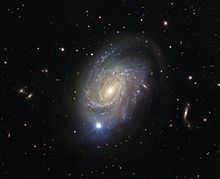
The discovery of Virgo was made by William Herschel on April 17, 1784.
Virgo is home to multiple galaxy clusters, including the Hickson Compact Group known as HCG 62. Located 200 Mly away from Earth (redshift 0.0137), HCG 62 features a prominent central elliptical galaxy surrounded by an irregular halo of extremely hot gas. This unique halo is believed to be a result of an active galactic nucleus present in the core of the central elliptical galaxy.
M87, the largest galaxy in the Virgo cluster, is situated 60 miles away from Earth (redshift 0.0035). It is renowned for being a significant radio source due to its jet of electrons being expelled by its central supermassive black hole. Astronomers find M87 particularly intriguing as this jet can be observed in multiple wavelengths, providing a valuable opportunity to study black holes in an exceptional galaxy.
M84 is a different radio galaxy with an elliptical shape found in the Virgo constellation. It is situated at a distance of 60 million light-years (redshift 0.0035). Scientists have proposed that the velocity of the gas clouds circling the core, which is approximately 400 km/s, suggests the existence of an entity with a mass 300 million times that of the Sun, most likely a black hole.
The Sombrero Galaxy, also known as M104, is a spiral galaxy that can be observed from an edge-on perspective. It is located 28 million light-years away from Earth (redshift 0.0034). The galaxy has a central bulge composed of older stars that are larger in size than average. Additionally, it is surrounded by large, bright globular clusters and features a highly noticeable dust lane made up of polycyclic aromatic hydrocarbons.
NGC 4438 is a peculiar galaxy situated 50 miles away from Earth (redshift 0.0035), boasting an active galactic nucleus. This galaxy’s supermassive black hole emits jets of matter, resulting in the creation of bubbles that can reach up to a diameter of 78 light-years.
NGC 4261, on the other hand, houses a black hole located 20 light-years away from its center, possessing a mass of 1.2 billion solar masses. Situated 45 million light-years from Earth (redshift 0.0075), this galaxy also exhibits an unusually dusty disk spanning 300 light-years in diameter. Alongside M84 and M87, NGC 4261 showcases strong emission within its radio spectrum…
IC 1101, a supergiant elliptical galaxy found in the Abell 2029 galaxy cluster, is positioned approximately 1.07 gl from Earth. With a colossal diameter of 5.5 million light-years, surpassing the size of the Milky Way by over 50 times, it holds the distinction of being the largest known galaxy in the universe.
Virgo is the location of the first identified quasar, known as 3C 273. It is also the most visually bright quasar in the sky, with a stellar magnitude of approximately 12.9.
Mythology
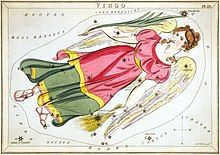 In the Mirror of Urania, a collection of constellation maps published in London around 1825, Virgo is depicted.
In the Mirror of Urania, a collection of constellation maps published in London around 1825, Virgo is depicted. 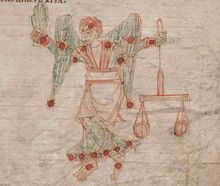 An image of Virgo from approximately 1000 is also present.
An image of Virgo from approximately 1000 is also present.
In ancient Babylon, there was a constellation called the “Furrow,” which represented the goddess Shala and her spike. One star in this constellation, known as Spica, has a Latin name meaning “spike,” which was a significant agricultural product in Mesopotamia. Because of this association, the constellation became linked to fertility. The constellation Virgo, as observed by Hipparchus, is a combination of two Babylonian constellations: “Borozda” in the east and “Frond Erua” in the west. Frond Erua was depicted as a goddess holding a palm branch, and this image occasionally appears in later depictions of Virgo.
In early Greek astronomy, the Babylonian constellation was linked to the goddess of agriculture and wheat, Demeter. The Romans, on the other hand, associated it with their goddess Ceres. Alternatively, the constellation was sometimes associated with the virgin goddess Justitia or Astraea, who held the scales of justice in her hand (now known as the constellation Libra). In a later Greek myth, the Maiden was identified as Erigone, the daughter of Jacrius of Athens. Erigone hanged herself in grief after her father Icarius, who was favored by Dionysus, was killed by his shepherds while intoxicated. In some versions of the myth, Dionysus placed father and daughter in the stars as Botes and Virgo, respectively. Another figure associated with the Virgo constellation was Persephone, the goddess of spring and daughter of Zeus and Demeter. Persephone married Hades and resided in the underworld during the summers.
In the Poeticon Astronomicon Hyginus (first century BC), Parthenos (Παρθένος) is described as the daughter of Apollo and Chrysothemis. She lived her entire life as a virgin and, after her death, was immortalized as a constellation in the night sky. Another account by Diodorus of Sicily suggests that Parthenos was actually the daughter of Staphylus and Chrysothemis, and the sister of Rheo and Molpadia (Chemiteus). According to this version, Parthenos and her companion Hemithea were rescued by Apollo after a failed suicide attempt and brought to Chersonesos, where she became revered as a local goddess. Strabo also mentions the worship of a goddess named Parthenos throughout Chersonesos.
During the Middle Ages, there were occasional associations made between Parthenos and the Blessed Virgin Mary.
Citations
References
- Ian Ridpath and Wil Tirion (2017). A guide to the stars and planets (5th ed.), William Collins, London. ISBN 978-0-008-23927-5 . Princeton University Press, Princeton. ISBN 978-0-691-17788-5 .
External links
| Wikimedia Commons has media files related to: Virgo (category ) |
Coordinates : 13 00 00 00, + 00 ° 00 ′ 00 ″
Virgo (Latin: Virgo) is a zodiacal constellation located between Leo and Libra. In modern times, it represents the point of the autumnal equinox in the constellation of Virgo.
The most brilliant star in the constellation Virgo is Spica, which is derived from the Latin word “spike” and has a massive spectral double with a magnitude of 0.98. Another notable double star in Virgo is Porrima, named after the goddess of prophecies. It is one of the closest double stars to us, located at a distance of 32 light years, and has a highly elongated orbit with a period of 171 years. The individual components of Porrima have magnitudes of 3.45, but when combined, they have a magnitude of 2.7. The maximum distance between the components was approximately 6″ in 1929, but by 2007, it had decreased to 0.5″. As a result, the star is now visible as a single star.
The region in the upper right of the Virgo constellation, located northwest of the ε, δ, and γ stars, is of significant interest to experts in extragalactic astronomy. In this relatively small portion of the sky, there are at least two and a half thousand distant galaxies. This area, filled with stellar systems, extends beyond the boundaries of the Virgo constellation and reaches into the region of the Veronica’s Hair constellation (which was previously considered part of Virgo). This vast cluster of galaxies is located so far away that it takes approximately 1.3 billion years for light from it to reach Earth. By observing this part of the sky, we are able to catch a glimpse of the ancient history of the Universe.
About 59 million light-years away lies the Virgo galaxy cluster, which is home to more than 1500 members. Among them are elliptical galaxies like M 49, M 59, M 60, M 84, M 86, M 87 (also known as a radio source), and M 89. There are also spiral galaxies, such as the intersected M 58, the radiant M 90, the edge-on M 85, and the large, flat-topped M 61. One can almost see the Sombrero galaxy (M 104) from the outer rim due to the prominent dark dust line along its equatorial plane. In the constellation Virgo, you can find the brightest quasar, 3C 273, which has an apparent stellar magnitude of 12th and is the most distant object that can be observed with an amateur telescope (redshift z=0.158; distance 3 billion light-years).
Typically, the Sun is in the Virgo constellation from September 16 to October 30. The optimal time for observation is during March and April.
Feel free to click on the image to enlarge it.
Background
This constellation has a rich historical background and is featured in Claudius Ptolemy’s Almagest star catalog. The ancient Greeks associated this constellation with various goddesses and heroines, such as Erigona for the Athenians. However, the most widely accepted interpretation is that it represents Demeter, the daughter of Cronus and Rhea. Demeter is known as the goddess of fertility and agriculture, as well as the mother of Persephone.
In depictions, the Virgin is depicted holding a spike, which corresponds to the star Spica. Another prominent star in this constellation is Vindemiatrix, which translates to “winemaker” in Latin. It is believed to represent Ampel, a young man who was transformed into a star. Ampel was the lover of Dionysus, the god associated with the bountiful forces of the earth and winemaking.
Virgo (zodiac sign)
Virgo is the sixth astrological sign in the zodiac, representing the sector of the ecliptic from 150 ° to 180 °, starting from the vernal equinox point. It is classified as a mutable sign and belongs to the Earth trigon.
In Western astrology, the Sun is believed to be in the sign of Virgo from approximately August 24 to September 23, while in Vedic astrology, it falls between September 16 and October 15. It’s important not to confuse the sign of Virgo with the constellation Virgo, which the Sun is in from September 16 to October 30.
The symbol for Virgo is ♍ (may not display in some browsers). In Unicode, it can be found under the decimal number 9805 or the hexadecimal number 264D. In HTML code, it can be represented as ♍ or ♍.
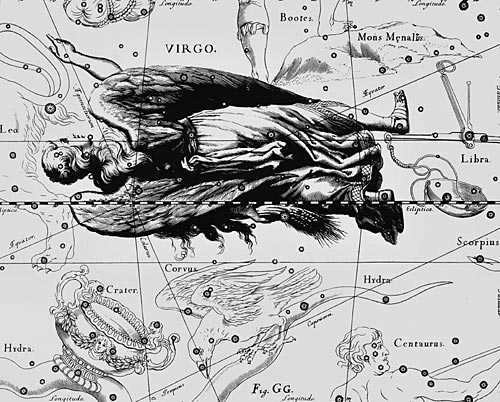

Janus Hevelius’ Uranographia Atlas (1690) shows the star constellation Virgo.
Click the image to see it in a larger size.
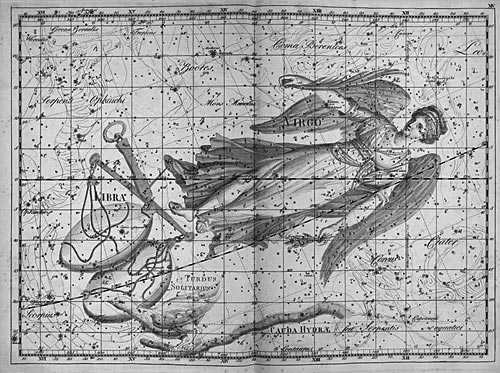

The image above showcases the Virgo constellation as depicted in the Atlas “Uranographia” by J. E. Bode in 1801. Feel free to click on the image to view it in a larger size.
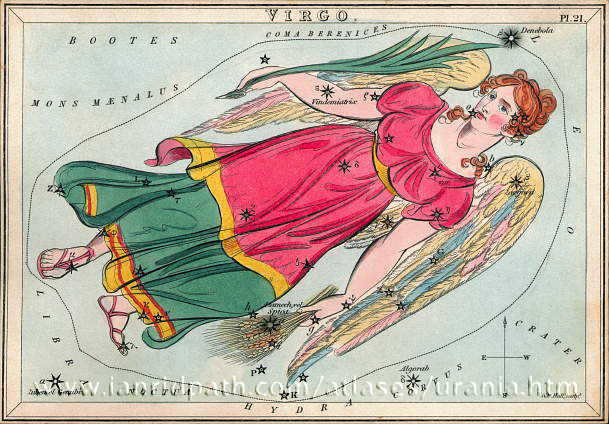
The constellation Virgo depicted in the Atlas “Urania’s Mirror” (London, 1825)
Legend
The zodiacal constellation Maiden is most commonly observed during spring nights, when it reaches its highest point above the southern horizon. It is bordered by the constellations Libra, Corvus, Leo, and Coma Berenices.
On a night that is clear and devoid of the moon’s presence, the constellation Virgo offers a captivating sight to the naked eye, with a total of 95 visible stars. However, only a select few, around twelve stars, possess a brightness surpassing the fourth magnitude. Among these celestial gems, the star Spica reigns supreme as the brightest in the constellation. To locate this stellar marvel, one simply needs to extend the imaginary arc formed by tracing the stars that compose the “tail” of the Big Dipper. Following this mental trajectory, the observer will fortuitously encounter the orange-hued star Arcturus, a member of the Volopassus constellation. Continuing the mental journey along the same arc, the observer’s gaze will ultimately be graced by the presence of the blue-white radiance emitted by the star Spica.
By connecting the brightest stars of the constellation and Spica with lines, we can create a large irregular quadrilateral – a distinct geometric shape of the Virgo constellation. This shape is quite different from the traditional depiction of Virgo on ancient star maps and atlases, which often portrayed a winged girl holding a ripe ear of wheat, with Spica shining within it. It’s truly remarkable how the ancients could envision a beautiful winged girl within such an irregular quadrangle!
When the Virgo constellation appeared in the sky after a period of being invisible, it marked the beginning of the harvest in ancient Egypt. As a result, the brightest stars in this constellation came to be known as “Reaper Girls” or simply “Reapers”.
There are several fascinating celestial bodies (such as binary stars, stars with varying brightness, and galaxies) within the Virgo constellation, but they can only be observed by using a telescope. For instance, the star γ Virgo is part of the luminous binary stars. The main star has a magnitude of 3.6, while its companion has a magnitude of -3.7. The angular separation between the two components is a mere 5″, which means they can only be observed as separate entities within the telescope’s visual field. The fact that the companion γ in Virgo is believed to be a variable star adds to the allure of this object, making it an intriguing subject for continuous observation.
In Greek mythology, the constellation Virgo represents Demeter, the goddess of fertility and agriculture, who taught humans the art of cultivating the land. Without her life-giving power, nothing would flourish on Earth, and it would transform into an arid desert.
Happily and without any worries, Persephone enjoyed her time with her friends – the Oceanides – in the beautiful Nisei valley. Just like a graceful butterfly, the young daughter of Demeter skipped from one flower to another. She plucked cornflowers and violets, skillfully crafted stunning wreaths and adorned herself and her friends with them. The joyful laughter and melodic songs of Persephone and the Oceanids echoed throughout the entire valley, bringing even the ferocious and savage beasts immense joy.
And thus, the days passed swiftly. Persephone blossomed into an even more exquisite beauty, and the merry games and melodious songs of her companions grew ever more vibrant. Little did she know that her delight in the radiant golden beams bestowed by Helios would soon come to an end. Her omnipotent father, Zeus, had made a vow to betroth his daughter to his brother Hades, the sovereign of the realm of shadows in the underworld. There, she would reside amidst perpetually mournful ethereal beings, where silence prevails and sunlight never finds its way.
The moment arrived when Hades laid claim to Persephone as his own. One fateful day, while she was playing joyfully with the Oceanides, Hades caught sight of Persephone and devised a plan to snatch her away. He beseeched Gaea, the goddess of the Earth, to cultivate a flower of unparalleled beauty. Gaea acquiesced and nurtured a flower with such exquisite petals and intoxicating fragrance that had never been witnessed before. Persephone noticed the flower and extended her hand to pluck it, but as soon as she leaned over the blossom, the ground suddenly split open and Hades emerged in a chariot pulled by ebony horses. He seized Persephone and in an instant vanished with the chariot into the impenetrable depths of the underworld. This all occurred so swiftly that none of the Oceanids even perceived how or where Persephone vanished. They only heard a cry that echoed through the depths of the sea and the distant peaks of Olympus. The goddess Demeter immediately raced to the Nisei Valley, but found it empty. The frightened Oceanids scattered and sought refuge in the abode of their father, the venerable Oceanus. Demeter plunged into profound anguish, donned a long ebony robe, and, shedding tears, embarked on a quest to find her daughter, yet discovered no trace of her beloved child. It was only on the tenth day that she learned from the radiant Helios that the somber Hades had abducted Persephone to his shadowy realm.
The goddess Demeter was overcome with even greater sorrow. Tears streamed down her cheeks, creating a chilling effect on the entire earth. The once vibrant leaves cascaded from the trees, and a haunting rustle echoed through the bare branches. The once blooming flowers drooped, and the once fertile fields transformed into a barren desert. Hunger gripped the land, and the sounds of wailing and crying filled the air. However, the goddess Demeter remained unaffected by these changes. Her thoughts were consumed by her beloved daughter. With a heavy heart, she embarked on a journey and arrived at the city of Eleusinus. There, beside the city walls, near the olive tree, she settled upon the “stone of sorrow” by the illustrious “well of virgins”. She remained there for an extended period of time. The daughters of the king of Eleusinus noticed her presence and brought her to their father’s grand palace. Yet, even within the opulence of the palace, Demeter’s grief persisted, casting a shadow over her every moment.
The famine was becoming more severe as not a single blade of grass sprouted from the barren, parched ground. All living beings faced the threat of starvation and disease. No one made offerings to the gods, the temples stood empty, and the altars remained unlit. It was only then that Zeus, the ruler of Heaven and Earth, realized that the entire human race would perish due to the sorrow of his sister goddess, Demeter. In response, he sent Iris, the messenger of the gods, to deliver his command to Demeter. Iris swiftly flew on her wings to Eleusis, where she humbly presented herself before the grieving Demeter and delivered Zeus’ message, urging her to return to Olympus. However, in a barely audible voice, the goddess replied, “I will not return to Olympus until Hades releases my daughter!”
Upon hearing Demeter’s response, Zeus furrowed his brow. He summoned Hermes and instructed him to journey to the realm of Hades and request that Persephone be allowed to reunite with her mother.
Hades had no choice but to fulfill Zeus’s will. He agreed to release Persephone, but before she left, he held her close and made her eat a pomegranate seed – a symbol of the unbreakable bond of marriage. From that moment on, Persephone could never forget Hades. She sat in a chariot with Hermes, and winged horses carried them over the endless chasms of the underworld. In an instant, they arrived in Eleusis and stopped in front of Demeter, who was frozen in grief. Demeter was startled by the thunderous sound of the horses and looked up. She saw her daughter, filled with joy, and hugged her tightly before ascending with her to Olympus. There, Zeus determined Persephone’s fate: she would spend two-thirds of the year on earth with her mother, and one-third of the year she would return to her husband Hades in the underworld.
Demeter was filled with joy when she saw her daughter by her side, and she cast her beneficent powers upon the Earth once more. Life and fertility were restored to every corner of the land. The forests transformed into a lush green, vibrant flowers bloomed in the meadows, birds sang their merry tunes, and the vast fields turned a golden hue as the ears of grain grew plump. Once again, a celebration had arrived upon the Earth.
Herds of cows, bulls, sheep, and goats grazed peacefully on the green meadows and sought shade in the cool forests, resembling massive white clouds. People lived happily and reveled in joy. However, it was time for Persephone to return to the underworld, to Hades. Demeter’s heart sank once more. The leaves on the trees turned yellow and fell, carried away by the cold wind. The grass withered, flowers wilted, and the songs of birds ceased, replaced only by the ominous cawing of crows. Blizzards and snowstorms brought a cold grip upon the Earth. Life seemed to slumber as Demeter mourned the fate of her beloved daughter.
But then, Persephone returned to her mother’s side, and the goddess once again bestowed her life-giving power upon the Earth. Meadows and trees burst forth in vibrant green, flowers blossomed with radiant colors, birds filled the air with their melodies, and Helios showered the Earth with golden rays. The fields turned yellow once more, their ears of grain growing heavy, and the songs of reapers echoed far and wide across the countryside.
Demeter, the goddess of fertility, generously bestowed her gifts upon the Earth, blessing the toil of farmers and rewarding them with bountiful harvests.
When Virgo, the constellation, made its appearance in the sky, observers beheld the majestic goddess Demeter, clutching ripe wheat ears, radiating with elation that her cherished daughter Persephone had returned to her. Consequently, preparations for the harvest commenced, with hopeful anticipation that Demeter would bestow bountiful rewards upon their toil.
A captivating tale links the constellations of Volopassus, Virgo, and the Big Dog, which are situated at considerable distances from each other on the celestial sphere, according to mythology.
The god Dionysus made his presence known in every corner of the Earth. He led the way, adorned with a wreath of vines, while drunken satyrs with goat feet and rowdy maenads followed him in a frenzied dance. Riding at the end of the procession, barely clinging to a donkey, was Silenus, the wise and perpetually drunk teacher of Dionysus. With songs and music, this boisterous group roamed through forests and mountains, making sure to visit even the most remote villages. The people greeted Dionysus and his entourage with great joy. He taught them how to cultivate grapes and create exquisite wine from the luscious ripe clusters, a drink that was akin to the nectar of the gods and brought happiness and merriment. However, not everyone welcomed Dionysus with open arms and acknowledged his divine authority. In such cases, Dionysus had to resort to force and harshly punish those who refused to honor him.
And those individuals who embraced the jolly deity and his retinue were generously rewarded by Dionysus. Icarius was the first in Attica to receive such a recompense. He warmly welcomed Dionysus and his companions into his home and treated them with utmost kindness. Prior to bidding farewell to his gracious host, Dionysus gifted him a vine and imparted knowledge on grape cultivation and winemaking. Icarius diligently tended to the vine and before long, the expansive fields were adorned with flourishing vines blessed by the god Dionysus. Utilizing the luscious amber clusters, Icarius skillfully crafted wine according to Dionysus’ teachings, resulting in a libation so exquisite that anyone who partook in it would be filled with mirth and bliss, their worries and troubles dissipating.

